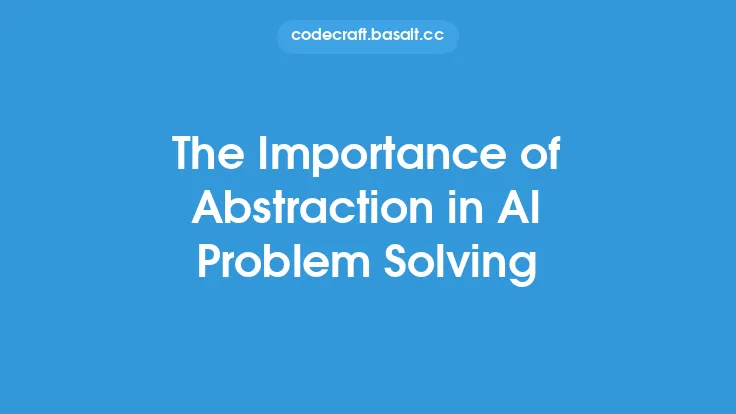Convolutional neural networks (CNNs) have revolutionized the field of computer vision, enabling state-of-the-art performance in various tasks such as image classification, object detection, segmentation, and generation. The unique architecture of CNNs, which is inspired by the structure and function of the human visual cortex, allows them to automatically and adaptively learn spatial hierarchies of features from images. This article will delve into the role of CNNs in computer vision, exploring their architecture, training, and applications.
Introduction to Convolutional Neural Networks
A CNN typically consists of multiple convolutional layers, followed by pooling layers, and finally, fully connected layers. The convolutional layers apply a set of learnable filters to the input image, scanning the image in both horizontal and vertical directions, and generating feature maps that represent the presence of specific patterns or features at different locations in the image. The pooling layers downsample the feature maps, reducing the spatial dimensions and retaining the most important information. The fully connected layers then classify the input image based on the features extracted by the convolutional and pooling layers.
Architecture of Convolutional Neural Networks
The architecture of a CNN can be customized to suit specific computer vision tasks. For example, in image classification tasks, a CNN may consist of multiple convolutional layers with increasing numbers of filters, followed by pooling layers and fully connected layers. In object detection tasks, a CNN may use a region proposal network (RPN) to generate candidate regions, followed by a classification network to classify the regions. The architecture of a CNN can also be modified to incorporate additional components, such as recurrent neural networks (RNNs) or long short-term memory (LSTM) networks, to handle sequential data or temporal relationships.
Training Convolutional Neural Networks
Training a CNN requires a large dataset of labeled images, as well as a suitable loss function and optimization algorithm. The most commonly used loss function for CNNs is the cross-entropy loss, which measures the difference between the predicted probabilities and the true labels. The optimization algorithm used to train CNNs is typically stochastic gradient descent (SGD) or one of its variants, such as Adam or RMSProp. The training process involves iteratively updating the model parameters to minimize the loss function, using backpropagation to compute the gradients of the loss with respect to the model parameters.
Applications of Convolutional Neural Networks
CNNs have numerous applications in computer vision, including image classification, object detection, segmentation, and generation. In image classification, CNNs can be used to classify images into predefined categories, such as animals, vehicles, or buildings. In object detection, CNNs can be used to detect and localize objects within images, such as pedestrians, cars, or bicycles. In segmentation, CNNs can be used to partition images into semantically meaningful regions, such as separating foreground objects from the background. In generation, CNNs can be used to generate new images, such as synthesizing faces or objects.
Transfer Learning and Fine-Tuning
One of the key advantages of CNNs is their ability to leverage pre-trained models and fine-tune them for specific tasks. This approach, known as transfer learning, allows CNNs to adapt to new tasks and datasets with minimal additional training data. The pre-trained models are typically trained on large datasets, such as ImageNet, and can be fine-tuned for specific tasks by adding new layers or modifying the existing layers. Transfer learning and fine-tuning have become essential techniques in computer vision, enabling the development of highly accurate models with minimal training data.
Challenges and Limitations
Despite the success of CNNs in computer vision, there are several challenges and limitations that need to be addressed. One of the major challenges is the requirement for large amounts of labeled training data, which can be time-consuming and expensive to obtain. Another challenge is the risk of overfitting, which occurs when a CNN is too complex and fits the noise in the training data rather than the underlying patterns. Additionally, CNNs can be vulnerable to adversarial attacks, which involve manipulating the input data to cause the CNN to misclassify or produce incorrect results.
Future Directions
The field of computer vision is rapidly evolving, with new architectures, techniques, and applications emerging continuously. One of the future directions for CNNs is the development of more efficient and scalable architectures, such as mobile nets and shuffle nets, which can be deployed on mobile devices or embedded systems. Another direction is the integration of CNNs with other machine learning techniques, such as reinforcement learning or generative adversarial networks (GANs), to enable more complex and sophisticated computer vision tasks. Finally, the development of explainable and transparent CNNs is becoming increasingly important, as it can help to build trust and confidence in computer vision systems.
Conclusion
In conclusion, CNNs have revolutionized the field of computer vision, enabling state-of-the-art performance in various tasks such as image classification, object detection, segmentation, and generation. The unique architecture of CNNs, which is inspired by the structure and function of the human visual cortex, allows them to automatically and adaptively learn spatial hierarchies of features from images. While there are several challenges and limitations that need to be addressed, the future directions for CNNs are promising, with new architectures, techniques, and applications emerging continuously. As the field of computer vision continues to evolve, CNNs will play an increasingly important role in enabling intelligent and autonomous systems that can perceive, understand, and interact with the visual world.





